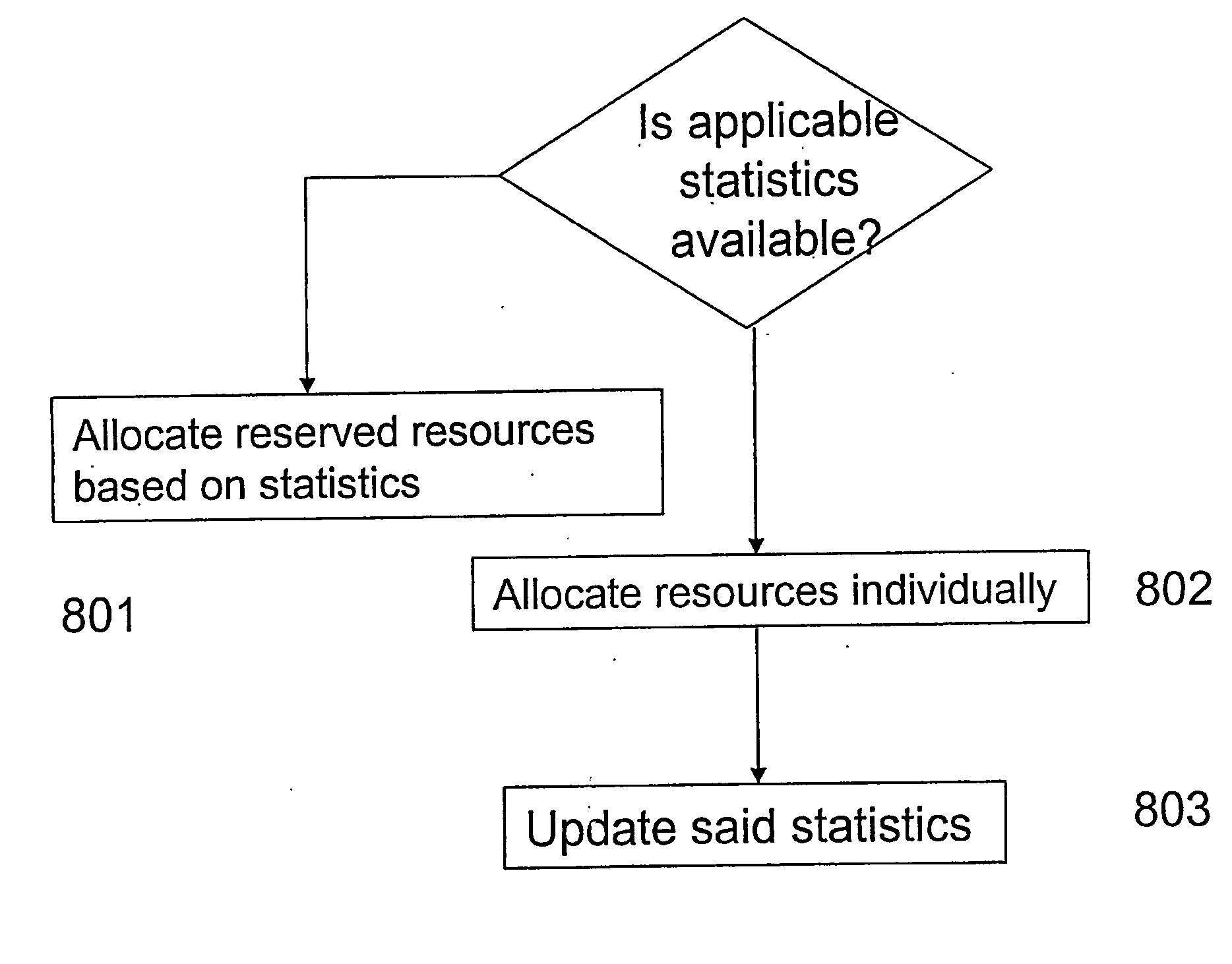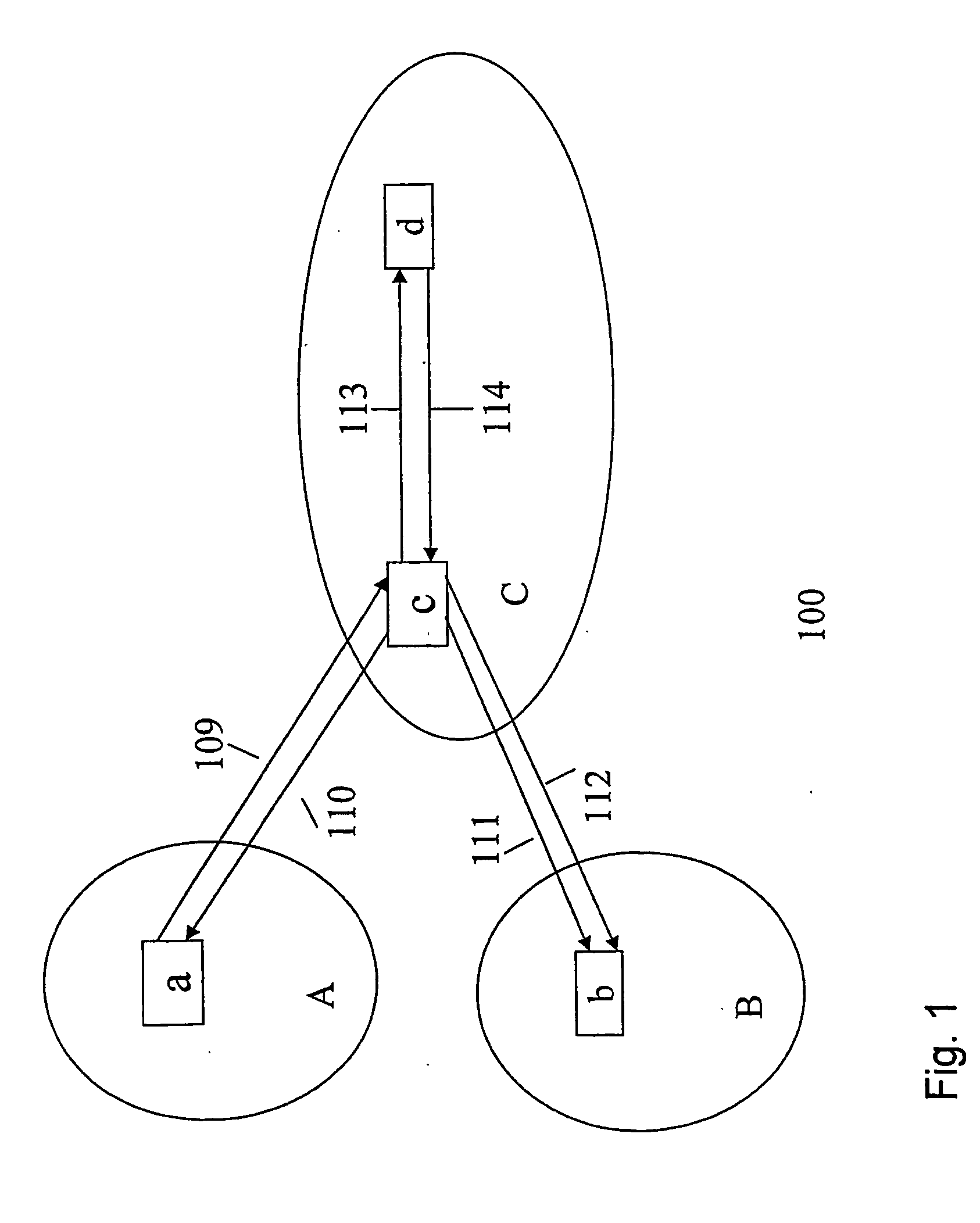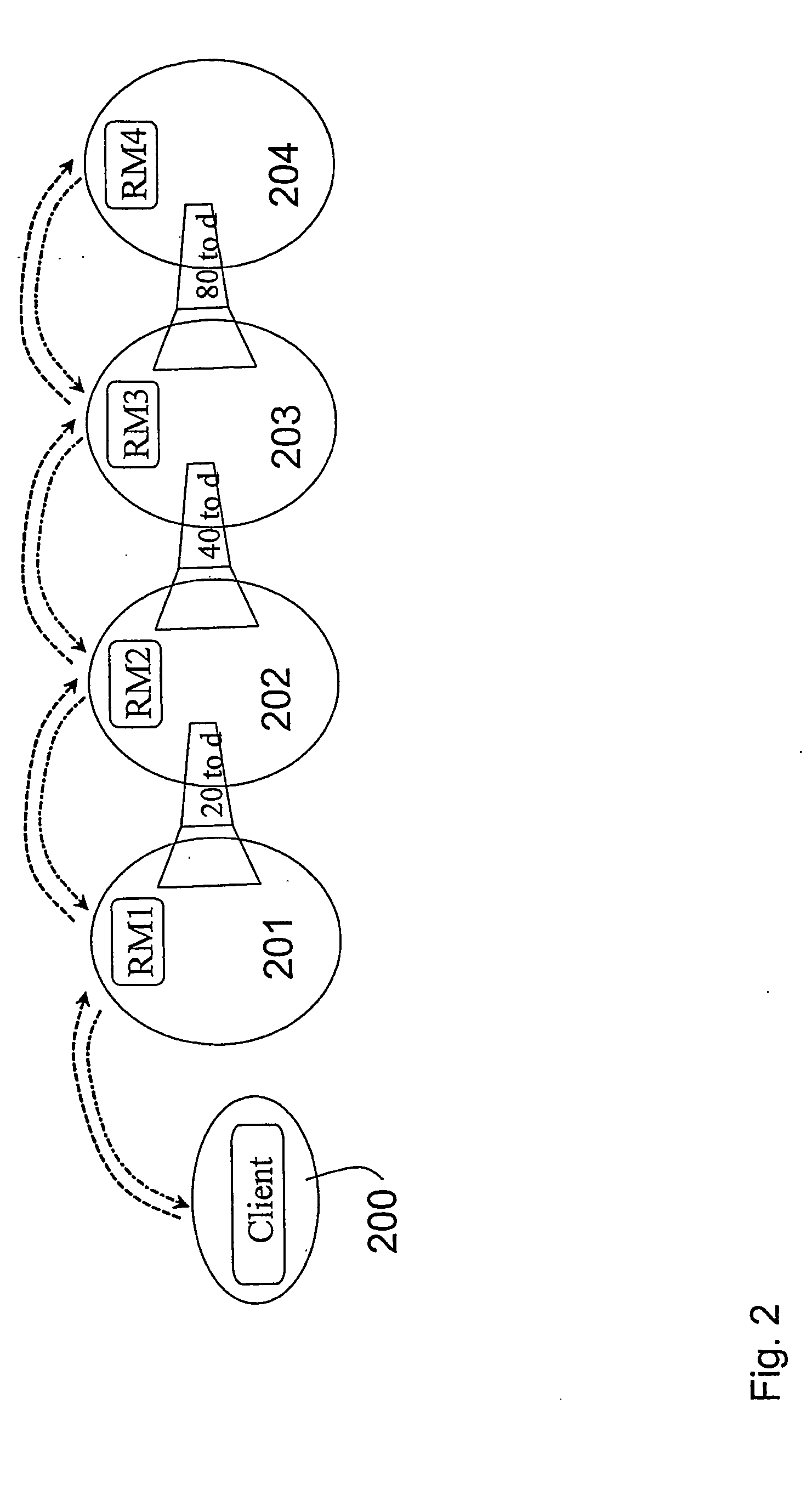Method and arrangement to reserve resources in an ip network
a resource manager and internet protocol technology, applied in the field of resource managers in internet protocol (ip) networks, can solve the problems of large amount of signalling, insufficient type of service for meeting, limited differentiation forwarding in routers, etc., to reduce the average delay from request, reduce the end-to-end signalling, and increase the speed of admission control
- Summary
- Abstract
- Description
- Claims
- Application Information
AI Technical Summary
Benefits of technology
Problems solved by technology
Method used
Image
Examples
Embodiment Construction
[0044]FIG. 1 illustrates an IP network 100 where the present invention may be implemented. The network 100 comprises at least one network domain A;B;C, at least two resource managers a;b;c;d, wherein said resource managers a;b;c;d are located within the same network domain or in different network domains. Each network domain may comprise a plurality of routers, endpoints (e.g. pc, IP telephones etc.) and servers connected to each other (not shown in FIG. 1). However, each domain comprises at least one resource manager a;b;c;d that is implemented within one of the plurality of servers or routers. The resource managers are adapted to communicate 109-114 with each other.
[0045] A solution to the problem of pre-allocating resources that automatically adapts to varying usage patterns with minimal signalling and still producing a high utilisation is in accordance to the present invention to combine a first algorithm and a second algorithm that work in parallel. The algorithms are used by ...
PUM
 Login to View More
Login to View More Abstract
Description
Claims
Application Information
 Login to View More
Login to View More - R&D
- Intellectual Property
- Life Sciences
- Materials
- Tech Scout
- Unparalleled Data Quality
- Higher Quality Content
- 60% Fewer Hallucinations
Browse by: Latest US Patents, China's latest patents, Technical Efficacy Thesaurus, Application Domain, Technology Topic, Popular Technical Reports.
© 2025 PatSnap. All rights reserved.Legal|Privacy policy|Modern Slavery Act Transparency Statement|Sitemap|About US| Contact US: help@patsnap.com



